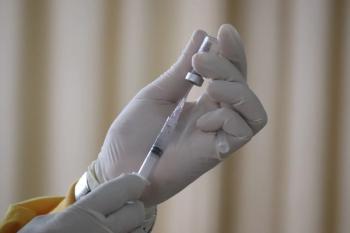
Building Trust Through Vaccine Education and Science Communication
At IDWeek 2025, Lori Handy, MD, MSCE, discussed how clinicians can strengthen vaccine communication by engaging openly and partnering with trusted community messengers.
At IDWeek 2025 in Atlanta, Lori Handy, MD, MSCE, associate professor of Clinical Pediatrics at the University of Pennsylvania School of Medicine and Children’s Hospital of Philadelphia, discussed the importance of trust and empathy in vaccine education during her oral abstract presentation, “Intersection of Vaccine Education and Science Communication.”
Handy emphasized that effective communication begins with understanding where patients get their information and how they feel about it.
“When we are one-on-one with a patient–clinician interaction, we actually have some really good strategies that help really uncover the information that they had,” she said. “What I like to do is one, be really open with them and not judgmental. Sometimes a patient might share misinformation, and I'll say, ‘Oh, I've heard a lot about that… Can you let me know what you're thinking?’ You're opening a conversation,” she said. “You're not right out of the gate negating it or trying to say that's not true—you’re just hearing where they got their information.”
Key points Handy emphasized included:
- Creating space for dialogue and validation before correction
- Recognizing emotional investment in health information
- Building sustained trust through consistent engagement
“When patients have taken the time to do their research… they feel very emotionally invested in the information that they found,” Handy noted. “We have to be careful not to dismiss the work that they put into trying to answer some of these challenging questions.”
Handy also highlighted the evolving landscape of science communication.
“People trust people, and they're not going to necessarily trust a name on an organization,” she said. “A lot of the work that we have to do is to get science kind of away from an institutional stamp or a journal stamp, and have it be communicated by people that are trusted by our patients.”
She added that social media has become a primary source of health information, particularly among younger adults.
“Eighteen to 29-year-olds, 75% of them will go to social media to look for health information,” Handy said. “We can’t solely rely on traditional media… but really figure out where our patients are going and get our information to that place, by a trusted messenger.”
Reference:
Handy L. Intersection of Vaccine Education and Science Communication. Oral abstract. Presented at: IDWeek 2025. October 19-22, 2025. Atlanta, GA.
Newsletter
Stay ahead of emerging infectious disease threats with expert insights and breaking research. Subscribe now to get updates delivered straight to your inbox.












































































































































































































































































